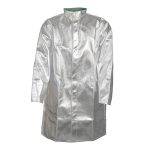Your list is empty, add products to the list to send a request
What Are the Five Stages of Fire?

17
Oct
Fire is a powerful and often destructive force that can have devastating consequences. Understanding its behavior and the stages it goes through is essential for effective prevention and response measures. This article will explore the five stages of fire—Ignition, Growth, Fully Developed, Decay, and Extinction—while emphasizing the critical role of fire safety products and practices in mitigating risks.
The five stages of fire are Ignition, Growth, Fully Developed, Decay, and Extinction. Recognizing these stages can help individuals and organizations implement effective safety measures and ensure readiness in case of a fire.
Stage 1: Ignition
The ignition stage marks the beginning of any fire. It occurs when a combustible material reaches its ignition temperature due to a heat source. This stage is crucial, as it sets the entire fire development process in motion. Factors contributing to ignition include various heat sources, which can range from matches and lighters to electrical sparks and friction. Almost any material can act as fuel, including paper, wood, fabrics, and flammable liquids. Therefore, understanding the types of fuels present in an environment is vital for fire prevention. Oxygen is another critical factor; a fire requires oxygen to sustain combustion, typically sourced from the surrounding air, which contains approximately 21% oxygen.
To prevent fires from reaching the ignition stage, several strategies can be implemented. Proper storage of flammable materials away from heat sources is essential. For instance, cleaning supplies, paint, and other chemicals should be kept in a cool, dry area. Electrical safety is also paramount. Regularly inspecting electrical appliances and wiring for signs of wear and tear can prevent sparks that might ignite nearby materials. Installing fire extinguishers in easily accessible locations is another vital precaution. At Firesupplies, we offer a wide range of fire extinguishers suitable for different environments, ensuring that you have the right equipment on hand.
Stage 2: Growth
Once a fire ignites, it enters the growth stage, characterized by rapid spread and an increase in size and intensity. This stage is defined by several key characteristics. As the fire grows, the temperature rises significantly, causing nearby materials to reach their ignition points and catch fire. This creates a cascading effect that can lead to an even larger fire. Smoke production becomes a major concern during this stage, as the combustion process generates significant amounts of smoke that can quickly fill a room and hinder visibility. Smoke inhalation is a major cause of injury and death in fires, making smoke alarms critical for early detection.
The heat generated during the growth stage can preheat adjacent materials, making them more susceptible to ignition. During this time, it’s crucial to implement fire safety measures to control the spread of the fire. Installing smoke alarms throughout your property is one of the most effective ways to ensure early detection and alert occupants before the fire spreads. Developing and practicing evacuation plans is equally important; ensuring everyone knows how to exit safely in case of a fire can save lives. Furthermore, equipping your space with fire extinguishers from Firesupplies can make a significant difference during the growth stage. Knowing how to use these extinguishers effectively can allow for a timely response before the fire escalates.
Stage 3: Fully Developed
The fully developed stage occurs when the fire reaches its maximum size and intensity. At this point, it consumes all available fuel and poses the greatest threat. This stage is marked by extremely high temperatures, often exceeding 1,500 degrees Fahrenheit. The intense heat can cause severe damage to structures and materials, and the volume of smoke produced creates life-threatening conditions. Poor visibility and high temperatures make it increasingly difficult for occupants to escape, and the structural integrity of buildings can become compromised, raising the risk of collapse.In the fully developed stage, emergency response becomes the primary focus. It is crucial to contact emergency services immediately. Providing them with specific details about the fire and its location ensures a prompt response. It is essential to emphasize that unless someone is trained and equipped, they should not attempt to extinguish a fully developed fire. Evacuation should take precedence, as personal safety is the most important consideration during this critical stage.
Stage 4: Decay
As the fire begins to exhaust its fuel supply, it enters the decay stage. This stage signifies a decline in the fire’s intensity and can offer a false sense of security. While the flames decrease in size, the fire is not yet entirely out. The characteristics of the decay stage include decreased flames and the continued presence of smoke. Even as the fire diminishes, smoke may still be prevalent, posing respiratory risks to anyone nearby. Residual heat remains a concern, as it can still ignite new fuels, leading to the potential for rekindling.
During the decay stage, it is vital to remain vigilant for signs of reignition, especially in smoldering materials. Proper ventilation is also crucial; ensuring adequate airflow can help disperse smoke and heat, improving air quality as the fire diminishes. Monitoring the situation carefully is essential to prevent any flare-ups, as even a small ember can reignite a fire if it comes into contact with flammable materials.
Stage 5: Extinction
The extinction stage occurs when the fire has been completely extinguished. This stage is characterized by the absence of flames and heat, but caution is still essential. While the fire is out, there can be lingering risks, such as structural damage or toxic smoke. Conducting thorough inspections after a fire has been extinguished is vital for ensuring safety and preventing further incidents.
After a fire is extinguished, several follow-up safety measures should be taken. Inspecting the affected area for any structural damage or hazards is critical. Engaging professionals for assessments can help identify potential risks that may not be immediately visible. Additionally, scheduling regular follow-up checks on fire safety equipment, such as extinguishers and alarms, ensures that all gear is functional and ready for future emergencies.
The Importance of Fire Safety Equipment
Understanding the five stages of fire is vital, but having the right fire safety equipment is equally important. Firesupplies provides a comprehensive range of fire safety products, including fire extinguishers, smoke alarms, and fire blankets. Fire extinguishers are essential tools for controlling fires in their early stages, allowing individuals to respond quickly before a fire escalates. Smoke alarms are critical for early detection and alerting occupants, significantly reducing the risk of injury or death in a fire. Fire blankets can be especially effective in kitchens or other areas where small fires may occur.
Regular maintenance of fire safety equipment is essential for ensuring effectiveness. Conducting routine checks on fire extinguishers and alarms can prevent equipment failure during emergencies. It is important to follow manufacturer guidelines for servicing and hydrostatic testing to ensure that your equipment functions properly when needed.
Additional Fire Safety Strategies
Education and training are critical components of effective fire safety. Regular training for staff and residents on how to use fire safety equipment can significantly reduce risks. This training should cover the proper operation of fire extinguishers, the importance of smoke alarms, and what to do in case of a fire. Engaging in community fire safety programs can also enhance awareness and preparedness for everyone involved.
Conducting regular risk assessments is vital for identifying potential fire hazards in your environment. Evaluating areas where flammable materials are stored, checking electrical systems, and identifying escape routes are essential steps in fire prevention. Developing comprehensive emergency response plans is equally important. These plans should include evacuation routes, designated meeting points, and emergency contacts. Practicing these plans regularly can ensure that everyone knows what to do in the event of a fire.
Engaging with local fire safety organizations can provide valuable resources and education. Many communities offer training programs and workshops that focus on fire prevention, emergency response, and safety practices. Participating in these programs can enhance your understanding of fire safety and provide practical skills that can be used in an emergency.
Conclusion
Understanding the five stages of fire—ignition, growth, fully developed, decay, and extinction—can significantly enhance fire safety preparedness. By recognizing these stages, individuals and organizations can implement appropriate safety measures to prevent, control, and respond to fires effectively.
At Firesupplies, we are dedicated to providing high-quality fire safety products and expert guidance. Equipping your home or business with the right tools ensures safety and compliance. For more information on our range of fire safety solutions, visit Firesupplies today and take proactive steps toward fire safety!



























